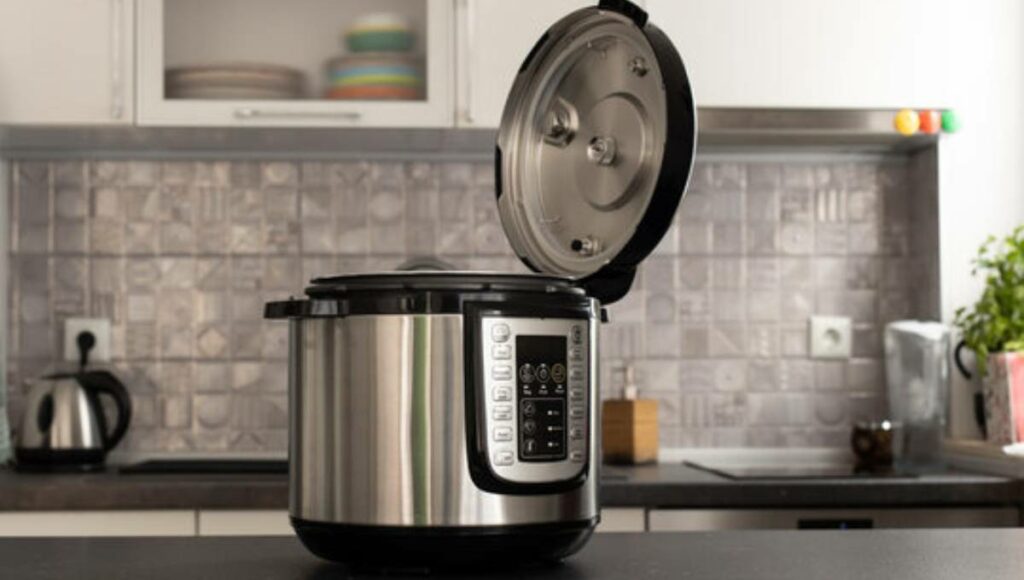Share the post "What Happens If You Overfill a Pressure Cooker? Mistakes to Avoid"
A pressure cooker comes in handy in whipping up healthy, tasty meals in the shortest time possible. It also helps that pressure cookers are easy to use and require minimal energy. However, the real challenge for most people is knowing the amount of water to add and what happens if you overfill a pressure cooker.
Overfilling your pressure cooker will result in the food losing its taste and texture thanks to the increased pressure from the excess liquids. There is also a danger of the food causing the pressure valve to become clogged.
This article discusses what happens when you overfill a pressure cooker and how you can avoid overfilling it.

3 Things That Happen When You Overfill a Pressure Cooker.
Here are three reasons you should avoid overfilling your pressure cooker.
1. The Food Loses Its Taste
The first thing you’ll notice after overfilling a pressure cooker is that the food won’t be as tasty. The excess liquid in the cooker causes excess steam to be generated. The excess steam breaks down the food and makes it mushy and tasteless.
2. Safety Hazard
Overfilling your pressure cooker is a major safety hazard because the excess liquid causes the pressure in the cooker to increase. The pressure cooker comes with a high-level indicator that tells you the maximum capacity of your cooker and built-in regulators and valves to ensure safety.
However, The risk of an explosion significantly increases once the pressure surpasses the safe capacity of the pressure cooker. This is because with the pressure cooker overfilled, the built-in safety regulators may fail.
3. Clogged Valves
Overfilling your pressure cooker can also result in some of the food being ejected from the pressure release valve. The release can be a messy affair and can even cause the valves to become clogged.
Consequently, the clogged valves will require more effort to clean. You’d need to separate the valve and clean the individual parts thoroughly.
How Can I Avoid Overfilling My Pressure Cooker?
Start by checking out the maximum capacity the pressure cooker can hold. Next, take into consideration the type of food you want to cook.
The minimum and maximum capacity of the pressure cooker is usually stated on the inner side of the cooker. Also, you should ensure that you follow the recommended water levels for the type of food you intend to cook. I.e. Your food should never exceed the maximum level mark indicated inside the cooker.
For example, if you want to cook grains like beans and rice, you’d need to fill up the pressure cooker to at most, a third of its capacity. Extra room is needed for the food to swell and expand in the pot. Other foods can take up to two-thirds of the capacity of the pressure cooker.
Easy Guide on Filling Your Pressure Cooker
Here’s a simple rule of thumb to ensure that you neither overfill nor underfill your pressure cooker. Always leave enough room for steam to build up in the pressure cooker. This helps speed up the cooking process.
- For solids and liquids (casseroles and stew) keep the pressure pot two-thirds full
- For soups and similar liquids, keep the pressure pot half full
- For cereals, grains, and foods that foam, keep the pressure pot one-third full
Conclusion
In this article, we have answered your question about what happens if you overfill a pressure cooker. The taste and texture of the food will most definitely change. To avoid this, always follow the manufacturer’s guide on the maximum capacity of the pressure cooker.

